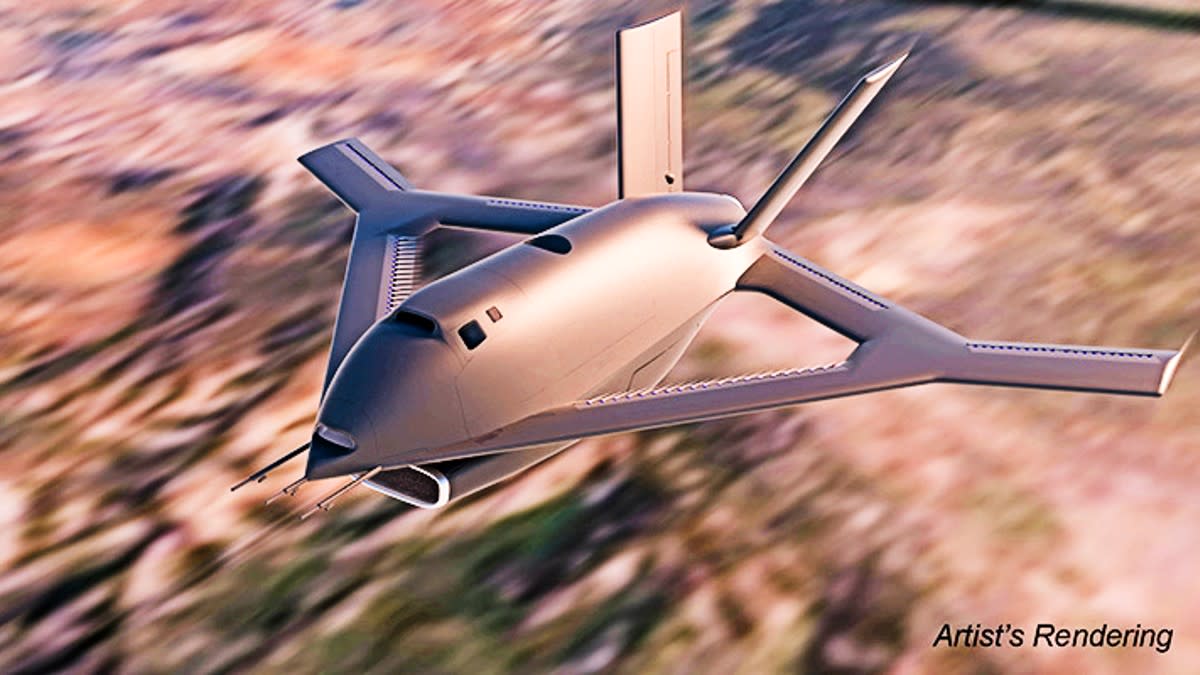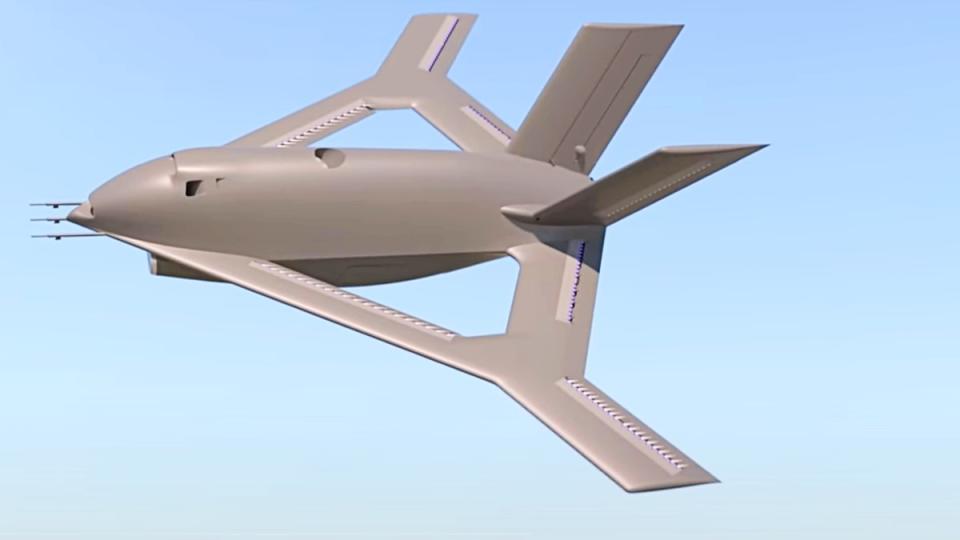This Bonkers New X-Plane Uses Holes in Its Wings to Hit Mach Speeds

Who says you need flaps and rudders to fly a jet? Aurora Flight Sciences is working on a new X-65—the latest in the government’s long-running experimental X-Plane series—that uses active flow control (AFC) to accomplish all maneuvers.
The aircraft is part of the Defense Advanced Research Project Agency’s (DARPA) Control of Revolutionary Aircraft with Novel Effectors (CRANE) program. While the government acronym isn’t as catchy as the X-Plane’s name, the program has gone through multiple phases since Aurora initiated the concept in 2020. Since then, the X-65 has progressed through its initial design with Boeing and the University of Arizona, completed system requirements, airworthiness evaluations, and wind-tunnel testing. In December 2022, the project was green-lighted to begin its detailed engineering design, and now, construction of a demonstrator has started.
More from Robb Report
How the Radical, Fuel-Efficient 'Flying V' Airplane Could Replace Jumbo Jets
This New Airplane Could Be The First to Fly on Carbon-Free Liquid Hydrogen
The AFC system is an innovative way to control the aircraft’s maneuvers. Instead of rudders and flaps, it uses jets of pressurized air in 14 “effectors” to shape airflow over the X-65’s surface to controls roll, pitch, and yaw. Besides looking cool, the absence of external moving parts decreases weight and complexity while improving performance.
“The X-65 is a technology demonstrator, and its distinctive, diamond-like wing shape is designed to help us maximize what we can learn about AFC in full-scale, real-world tests,” said Dr. Richard Wlezien, DARPA’s program manager for CRANE, in a statement.
The unpiloted demonstrator will have a 30-foot wingspan, weigh about 7,000 pounds and reach speeds to Mach 0.7, or 537 mph. It will first have flaps and rudders, as well as the effectors, which allows a performance comparison with traditional control mechanisms. “These data will help us better understand how AFC could revolutionize both military and commercial craft in the future,” said Wlezien.

The X-65 has a modular construction that allows the engineers to replace outboard wings and swap AFC effectors, so future designs can be tested on the same platform. Once the X-Plane is completed, it will be ground-tested at Aurora’s headquarters in Manassas, Virginia. Flight testing is targeted for summer of 2025.
“We are getting ever closer to fulfilling the goal of validating AFC technology and helping to open the design trade space for future applications,” said Kevin Uleck, CRANE program director at Aurora Flight Sciences. “The X-65 has the potential to change the future of aircraft design.”
Best of Robb Report
Sign up for Robb Report's Newsletter. For the latest news, follow us on Facebook, Twitter, and Instagram.

